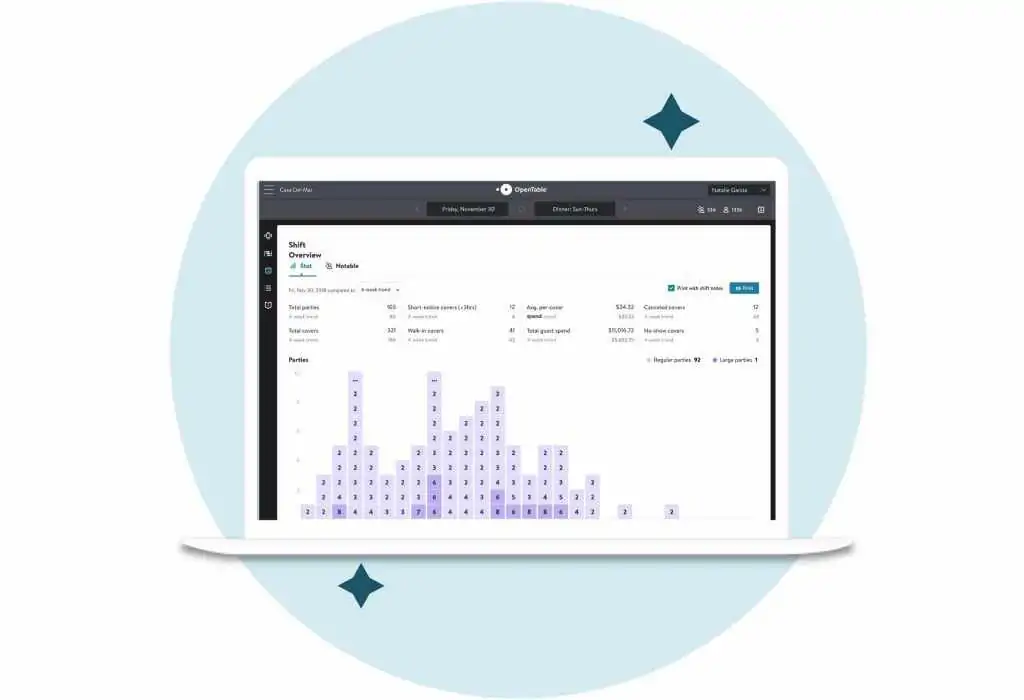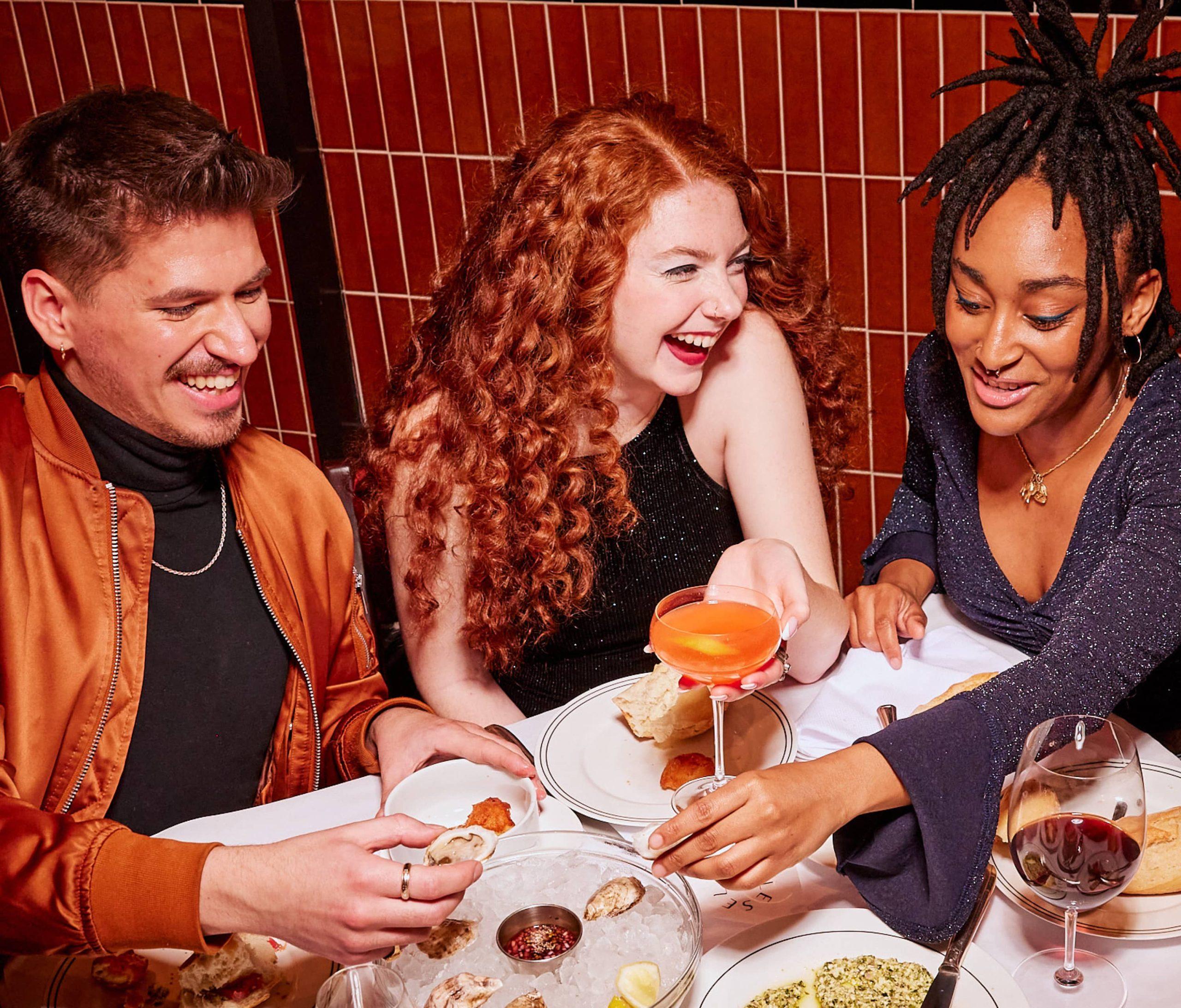Owning one restaurant and making sure that everything runs smoothly poses its challenges. But two, three, maybe four locations? That’s when the job becomes particularly tricky. No matter how many restaurants you have, you’ll want each spot to perform to the highest of standards. But if you don’t have the right tools at your disposal, looking after multiple locations can be hard to pull off. That’s where OpenTable comes in with a restaurant management system ready to make your life a whole lot easier. Here, we’ve got you covered with tips on managing your restaurant locations like a pro.
Essential details, at your fingertips
Having several restaurants increases the need for transparency across each location. With the groups option, you can centralise operations and see all the important details relating to each restaurant, such as availability for sites and regular overviews of reports that provide key metrics about performance.
Laura Rodriguez of Iberica Restaurant regularly uses groups to manage the day-to-day operations. She says, “The colour coordination helps detect availability across multiple sites with one visual. Each restaurant shows its availability in the same time frames at once, which makes the entire process more seamless.”
Whether you have multiple brands within the same portfolio or several restaurants in different locations, the groups view gives you total oversight. You can check in and see details about each restaurant, which saves time from switching between them in the diary.
Make the most of your team
After more than a year of closed doors and furlough, restaurants now need staff like never before. The sudden uptick in demand for tables only heightens the need to ensure you’re well equipped with staff, especially if some of those team members navigate shifts between locations.
Sadiye of Best Mangal in Fulham and Kensington, keeps on top of the team’s shift patterns with the availability planning for restaurants. It helps Sadiye see capacity plans and maximise staff during peak times. She says it has “proved helpful during busy times when managers need fast access to look at restaurant capacity plans or other tasks, such as staff scheduling.”
Have a plan for ‘no shows’
It’s estimated that guests who don’t show up for a booking cost the hospitality industry around £20 billion per year. A no-show at your restaurant is particularly frustrating, especially when they don’t cancel the booking beforehand and simply fail to turn up.
It’s difficult enough navigating people who don’t commit to their booking at one restaurant. But the likelihood of losing revenue increases if people fail to show up for bookings across multiple restaurant locations.
OpenTable helps reduce no-shows by stopping diners booking with more than one restaurant at the same time. When a guest reserves a table, they can’t go and make a booking simultaneously with another one. You can also manage cancellations and no-shows so you have complete control over bookings. Plus, there’s the option of attracting committed guests with credit card requirements at the point of booking to incentivise diners. That means you won’t miss out on the full cost of the booking as a result of no-shows.
Keep guests happy
The multiple restaurant view allows you to cross-sell if one of your other locations is fully booked. Flexible diners can take up the option of eating at another one of the brand’s sites if they’re happy to dine in a different location.
It’s also beneficial with different group sizes – if one restaurant can’t accommodate a specific number of guests, a staff member can view other locations to see if there’s space at another site. Instead of turning guests away and missing out on revenue, you can cross-sell and make the most of available tables at your other restaurants
Use data for better insights on diners
Attracting guests across your portfolio of restaurants requires an understanding of the dynamics of each location as well as the dining behaviours in the local community. The integration POS system helps with this by collecting real-time customer data, which restaurants can then use to promote their spots.
You can turn the data into actionable insights, such as an email marketing campaign aimed at a specific set of diners. Having access to data gives you a better understanding of each restaurant location, which means you can make smart decisions based on each sites’ needs.
Kevin Coetzee, the Operations Manager of Humble Grape, takes advantage of the POS system, adding that “the data available comes in handy as it captures customer information that we can integrate with other systems and use in ways relevant to the business, such as marketing communications.”
View restaurant statistics from anywhere
With the owner app, you can stay up to date on restaurant performance while tracking and managing your locations from anywhere. Along with a breakdown of all guests, you can see shift overviews, reservations lists and important numbers relating to your restaurant.
Owners and managers of several spots will find the app particularly helpful, as it gives you a complete rundown of all sites, no matter where you’re located. So you can be at one venue and still be in the loop on everything that’s going at your other sites.
Whether you have multiple locations or are in the process of expanding, you can simplify operations across sites by bringing them together into one handy place.

Personalise the experience, no matter the location
Giving guests a personalised experience is a great way to build relationships and gain trust while boosting repeat business, regardless of the location where they dine. Take notes on guests, including special occasions and even a diner’s preferred dish or favourite place to sit.
These little touches go a long way with diners, who will appreciate the extra effort. Offering a detailed and personalised experience across your locations helps build the brand’s reputation as somewhere willing to go the extra mile.
Laura Rodriguez finds the reporting option particularly helpful, thanks to its ability to “provide plenty of information in one go and offer a clear breakdown of each area.” The reporting system displays each restaurant’s guestbook in one aggregated view, so you can understand more about your guests and what they expect from your restaurant.




